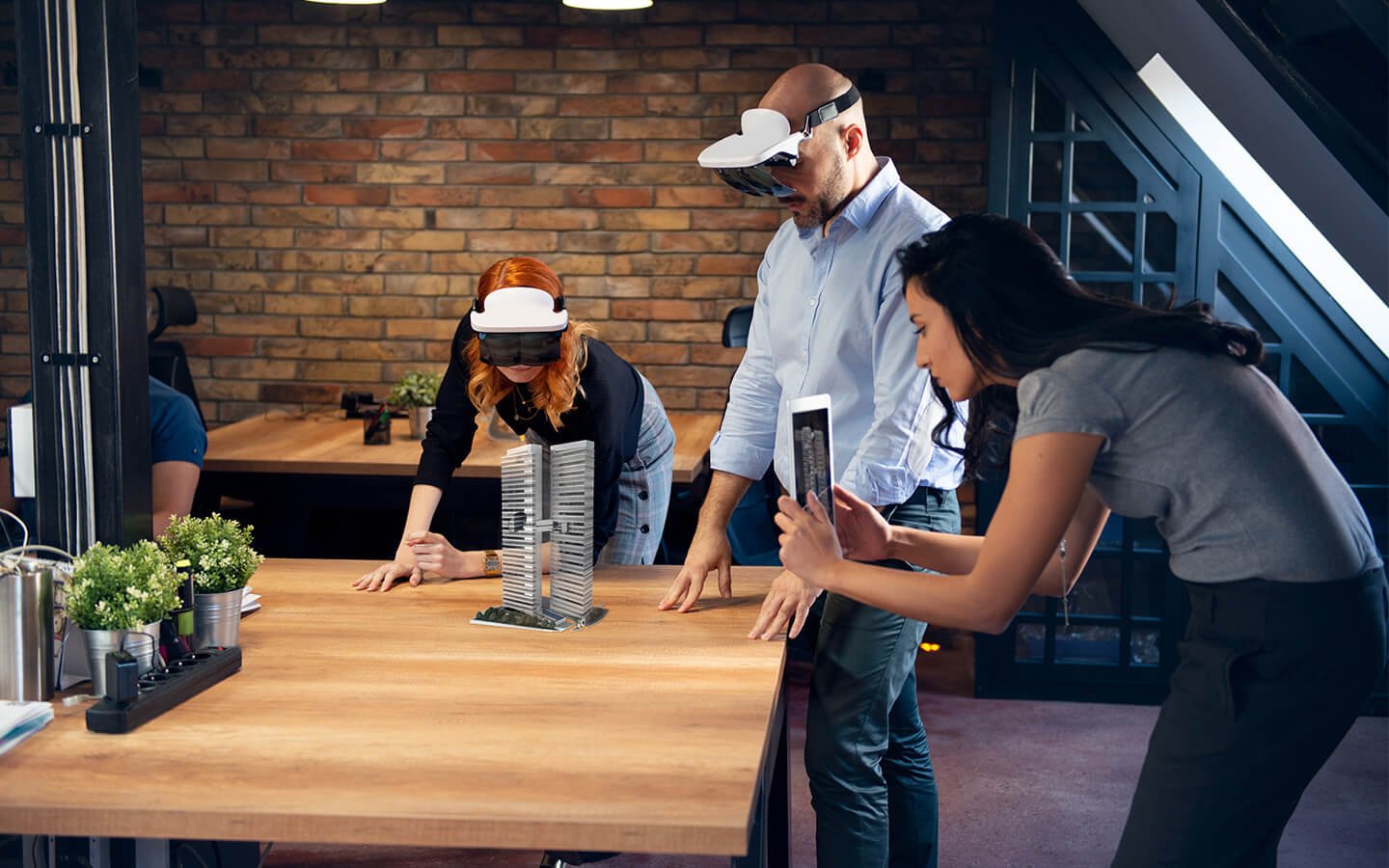The Digital Advantage: What is the Future of Business?
Digital technologies have been transforming our lives and landscapes for decades and will continue to do so at an ever-increasing pace in the future. Today, leaders urge businesses to reinvent themselves for Industry 4.0 (IR4.0), insisting that the country's future depends on it. But what exactly is IR4.0, who will be affected, and how can we fit in?
A history in revolutions
Just over 250 years ago, workers felt the first waves of change brought on by new technologies. These changes slowly swept over the world, and then the next wave came, transforming society and the economy once again. In the past hundred years, those waves have come with increasing frequency, disrupting our cities, homes and workplaces.
The First Industrial Revolution started in the 18th century with the invention of the steam engine. Over the next century or so, trains and steam-powered boats replaced slower forms of travel. Factories were built and – attracted by the new jobs these created – workers shifted from farms and villages to increasingly packed towns and cities.
The Second Industrial Revolution lit up cities and homes with electricity. Mass production was spurred by the creation of assembly lines. Suddenly formerly luxury items became affordable to an exploding number of consumers. The 40-hour week was introduced to encourage workers to spend their earnings and boost the economy.
The Third Industrial Revolution is also known as the (first) digital revolution. It brought us the processing power of computers and unprecedented access to information via the internet. Recent enough for many of us to remember some of the innovations, the Third Industrial Revolution, like its predecessors, provided more choices and opportunities, completely redrawing how we shop, consume, work and spend our free time.
Industry 4.0: bringing it all together
Industry 4.0 isn't merely a continuation of the first digital revolution. Many of the digital innovations of the 20th century can be looked at for their worth and followed a linear development. By contrast, this second digital revolution is about innovations that not only work with each other but blur the line between humanity and technology. '4.0' has been adopted in a number of industries and business functions (e.g., sales 4.0, management 4.0, energy 4.0, manufacturing 4.0) as shorthand for bringing processes, people, and technology together to boost productivity, innovation, and customer satisfaction.
This revolution is also significantly different from its predecessors in that it is not something that originated in the West and slowly made its way to the rest of the world. IR4.0 innovations can and have been developed everywhere, and the right solutions (increasingly offered 'as a service') circle the globe in no time at all. IR4.0 gives everyone equal opportunity to change the world.

The future of business communication
From the earliest revolutions, changes in business resulted in – and were caused by – advances in communication. Steam engines were used both to print large numbers of newspapers as well as deliver them more quickly and widely. This was followed by the invention of the telegraph, the radio, and the telephone. During the Third Industrial Revolution, the fax machine made an appearance; then the first email was sent in 1971. Digital cameras and mobile phones were introduced in the '80s and '90s, only to find their days numbered in the following decade when the first smartphone was released.
From there, everything exploded. Consider this: The telephone was invented in 1876, and it would take three-quarters of a century before 100 million people had access to the apparatus. By contrast, Apple has sold over 1.2 billion iPhones since the first one was launched in 2007. Over 9 million iPhone XRs were sold the first weekend of the product's release, with a total of 217 million iPhones bought last year.
Smartphones, of course, are only one piece of the communication puzzle. Today, workers communicate with each other and customers via calls, text messaging, group chats, video conferencing, file sharing, collaboration apps and more. The problem stopped being a shortage of solutions, but drowning in a flood of them – a problem that has been tackled with unified-communications-as-a-service (UCaaS) systems which synchronizes all methods of communication within a company.
Redefining speed and reliability
4G (4th generation broadband) introduced download speeds that were 20 times faster than 3G. By contrast, 5G will allow users to download at speeds between 100 and 250 times faster than 4G. It will enable users to download gigabytes of data onto their mobile devices within seconds. The transformational power of 5G is not just in higher speeds, however. In a recent article in Forbes, Simon Rockman wrote: 'Think of 1G as vinyl records. Then think of 2G as CDs, 3G is like DVD and 4G is Blue Ray. But 5G is like the internet. It opens up Netflix, Spotify, iPlayer.'
PC Mag Asia called 5G 'an investment for the next decade'. As with 4G, the true expanse of opportunities will only be apparent once the technology is in place. This will happen sooner than we think. Earlier this year, Malaysia's first 5G live trials were initiated, recording speeds of nearly 3Gbps (three billion bits per second).
Consider what doors this will open for your business.
More in this series:
1. The Digital Advantage: What is the Future of Business?
2. Revolutionising Business: Understanding the Potential of Digital
3. A Competitive Foundation: Creating a Digital Culture
4. Unified Communication: Your Gateway to Transformation



